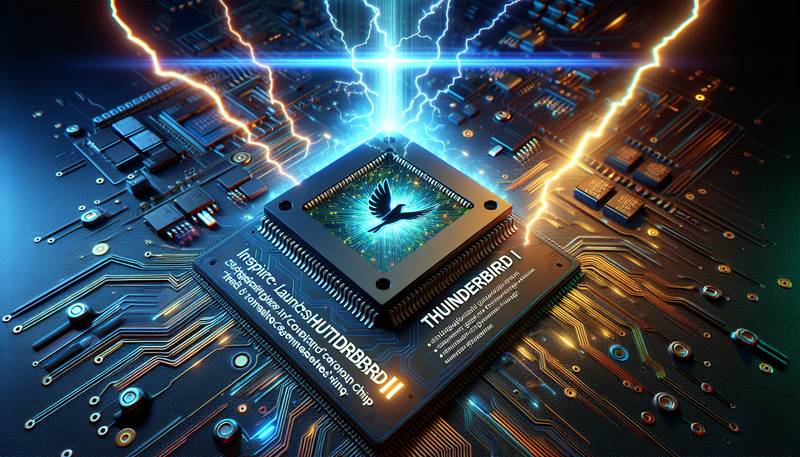InspireSemi Launches Groundbreaking Thunderbird I Computing Chip

Get ready for a game-changer in the world of accelerated computing. InspireSemi has just announced the successful tapeout of their Thunderbird I chip, which is currently in production at TSMC. This "supercomputer cluster-on-a-chip" is designed to take on the most demanding scientific computing and complex data processing tasks with its impressive array of 1,536 custom 64-bit RISC-V CPU cores.
Optimized for AI and Machine Learning
Thunderbird I is perfect for a wide range of compute-intensive applications, including AI, machine learning, and graph analytics. Thanks to its open standard RISC-V CPU ISA, developers can easily integrate it into their existing technology frameworks and benefit from a robust ecosystem of supporting software and tools.
High-Speed Mesh Network Fabric Delivers Top Performance
The chip's high-speed mesh network fabric provides significant bandwidth and low latency communication between cores, which is essential for synchronized operations across multiple threads. The integration of this network manages interactions within the core array and memory systems efficiently, ensuring peak performance without the typical bottlenecks.
Server PCIe Add-in Card with 6,000+ CPU Cores Coming Soon
Insider tip: The company plans to release a server PCIe add-in card featuring four Thunderbird chips, which will boast over 6,000 interconnected 64-bit CPU cores capable of handling double-precision math necessary for many high-performance computing tasks.
Ron Van Dell, CEO of InspireSemi, expressed pride in his team for completing the Thunderbird I design. Customers can look forward to deliveries starting in the fourth quarter, with pricing details yet to be announced.
But it’s not just about raw power. The Thunderbird I comes from a heritage of energy sensitivity designed for blockchain computing applications. Its energy efficiency provides a greener alternative to traditional data center GPUs, in line with the growing need for environmentally friendly technology solutions.
Stay tuned for more updates on this exciting leap in computing technology and how it might revolutionize your data processing capabilities.


